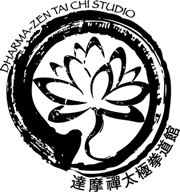In a time long past two Zen temples existed not far from each other. Each had a child protégé. In the morning Taowu always went to the market to buy vegetables. Without fail he would meet the other protégé Changkung. It was natural that they would try to best each other.
One day, just as in the past, Taowu left to go to the market. When Chankung saw Taowu he asked, “Where are you going?” Taowu replied, “I’m going wherever my feet go.” Changkung was so surprised by this correct answer that still didn’t tell him anything that he couldn’t come up with any reply. He talked to his Zen master who advised him to follow up Taowu’s reply with: “Suppose you have no feet, then where are you going?” Changkung gleefully imagined Taowu being forced to answer bluntly thereby losing the exchange.
So the next morning, when Taowu was walking past, Changkung asked again, “Where are you going?” This time Taowu replied, “I am going wherever the wind blows.” Once again Taowu couldn’t think of anything to say. He returned to his Master and complained, “I have lost again in the exchange. He did not mention feet, but changed it to wind.” The Master advised him to ask, “If there is no wind, where are you going?” Both Master and student smiled at their clever plan.
The next morning Changkung asked again, “Where are you going?” This time Taowu replied, “I am going to the market.” Surprised, the defeated Taowu and his Master could only look on as Taowu continued on his way.
From this story we see the power of clever, unrehearsed responses. Zen is instinctive and not dependent on logic thinking. Changkung was doomed to defeat as soon as he asked his Master for help. The subtlety of Zen is in the moment! Martial arts also emphasize using your instincts and on-the-spot decisiveness. The forms are just one way to train our muscle memory so when we face a real fight our body can use natural reactions. So just knowing the forms are not the answer. If you just want to use unmodified forms in a real fight you will end up badly surprised and defeated just the same as Changkung.
In Bruce Lee’s book “Jeet Kune Do” (edited by John Little) he talks about stylized form and no form.
“Forms and Katas are not the answer:
I think simply to practice gung fu forms and karate katas is not a good way. Moreover, it wastes time and does not match the actual (fighting) situation. Some people are tall, some are short, some are stout, and some are slim. There are various kinds of people. If all of them learn the same boxing (i.e. martial art) form, then who does it fit?
The highest state is no form:
I think the highest state of martial art, in application, must have no absolute form. And, to tackle pattern A with pattern B may not be absolutely correct. I feel that martial art should not be limited in a circle. That will produce in the students a wrong idea, thinking that a certain pattern will achieve the same result in fighting as in practice” (pg 27-8).
–Danny
